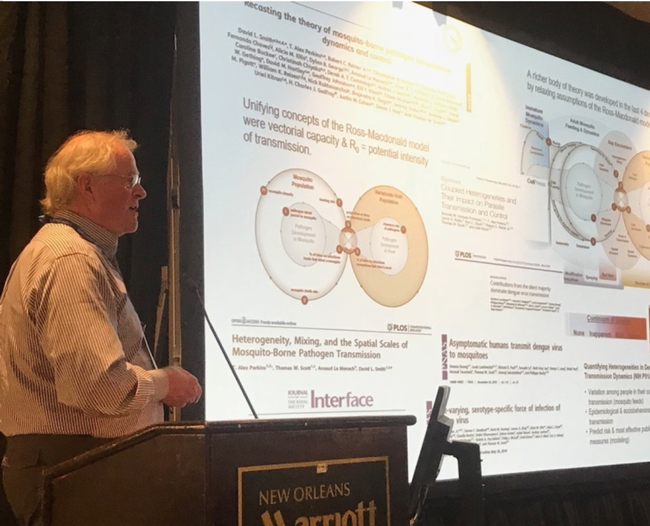- Author: Kathy Keatley Garvey
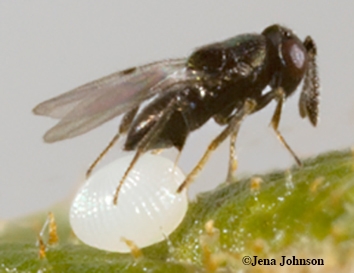
But newly published research by UC Davis agricultural entomologist Christian Nansen and insect physiologist Michael Strand of the University of Georgia reveals a new, non-destructive and quite accurate method to characterize physiological responses to parasitism: proximal remote sensing or body reflectance response data.
They published their research, “Proximal Remote Sensing to Non-Destructive Detect and Diagnose Physiological Response by Host Insect Larvae to Parasitism,” Dec. 4 in the journal Frontiers in Physiology.
Nansen, first author of the paper and an associate professor in the UC Davis Department of Entomology and Nematology, specializes in insect ecology, integrated pest management and remote sensing. Strand, a professor of entomology at the University of Georgia, is an international authority on the physiology of insect parasitism.
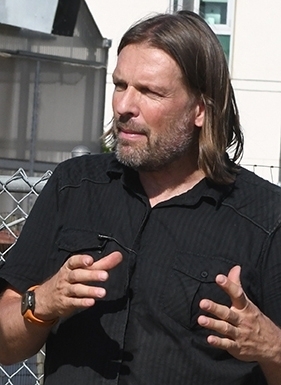
The Nansen-Strand project involved soybean loopers without parasitism (control group) and with parasitism, involving both wasp species.
“Based on reflectance data acquired three to five days post-parasitism, all three treatments (control larvae, and those parasitized by either M. demolitor or C. floridanum) could be classified with more than 85 percent accuracy,” they wrote.
Due to parasitism-induced inhibition of growth, “it's easy to differentiate soybean loopers parasitized by M. demolitor from non-parasitized larvae as long as the developmental stage of the host larva is known,” they said. In addition, a single M. demolitor offspring emerges from the host larva 7-9 days post-parasitism to pupate, while non-parasitized larvae continue to increase in size to the final instar.
Copidosoma floridanum minimally alters host growth until late in the final instar, when thousands of wasp progeny complete their development. This wasp is known for having the largest recorded brood—3,055 individuals--of any parasitoidal insect.
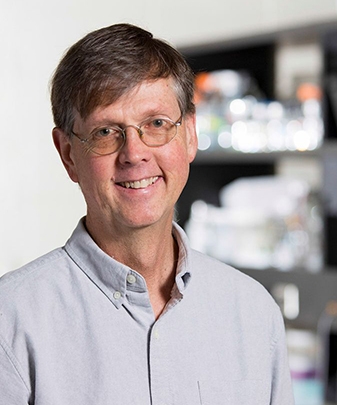
Parasitoids are often categorized as either idiobionts--whose hosts cease development after parasitism--or koinobionts--whose hosts continue to develop as the parasitoids offspring grow. “Parasitoids also are commonly divided into ectoparasitic species whose offspring grow by feeding externally on hosts or endoparsitoids, whose offspring grow by feeding internally,” the authors wrote. “Most known idiobionts are either ectoparasitoids that paralyze and lay eggs on the surface of larval stage hosts or are endoparasitoids that lay their eggs inside sessile host stages like eggs or pupae.”
Both of the wasps they studied are idiobionts and endoparasitoids.
Nansen noted that “many species of minute wasps are parasitoids of eggs and larvae of other insects, and parasitism represents one of the most extreme life strategies among animals”
“Living inside the body of another animal,” he said, “poses a series of non-trivial challenges, including how to overcome/suppress the defense response by the host; how to obtain oxygen; how to feed on the host without killing it--because once the host is dead, then microbial organisms and general decomposition will make the host body unsuitable--and how to manage waste.”
Nansen likened the developing parasitoids to astronauts flying in a space capsule. “A developing parasitoid faces a long list of serious practical challenges, so the evolutionary selection pressure has been immense and lead to some of the most extreme cases of co-evolution.”
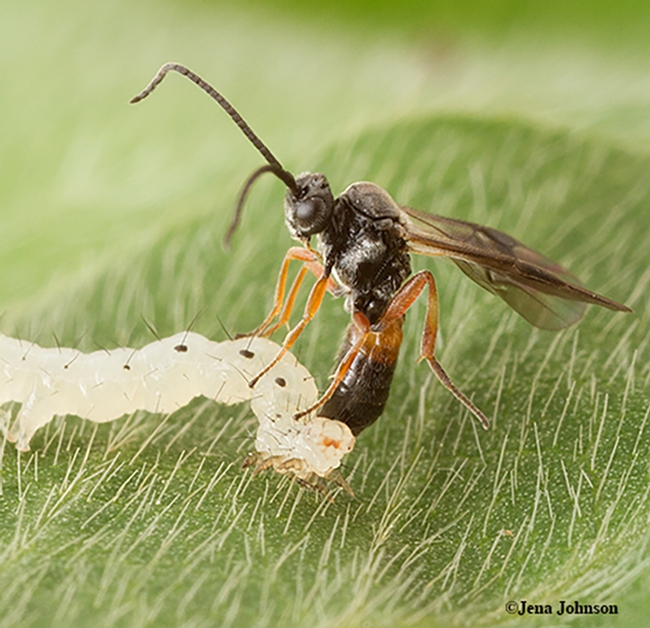
- Author: Kathy Keatley Garvey
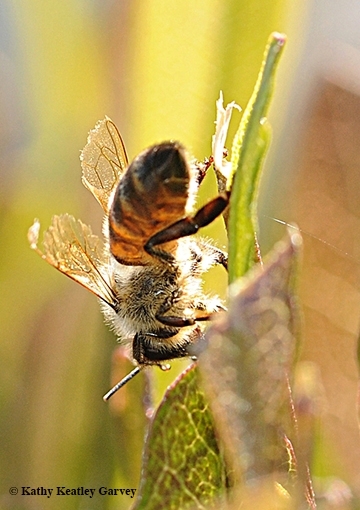
Martin Beye, a professor at the University of Düsseldorf, Germany and a former postdoctoral fellow in Page's lab at UC Davis, served as the lead author of the research, “Improving Genetic Transformation Rates in Honeybees,” published in Scientific Reports in the journal Nature.
The work was accomplished in Beye's lab in Germany and the Page labs.
“The significance of this paper lies in the ability to modify the chromosomes of honey bees and study the effects of individual genes,” said Page, former professor and chair of the UC Davis entomology department before capping his academic career as the Arizona State University provost.
“The honey bee genome,” Page explained, “is composed of about 15,000 genes, each of which operates within a complex network of genes, doing its small, or large, share of work in building the bee, keeping its internal functions operating, or helping it function and behave in its environment. The ability to transform, change, genes, or add or delete genes from chromosomes of bees, has been exceptionally challenging and the effort spans decades. Martin tackles problems such as this. He takes on the most challenging genetic problems and solves them.”
Beye was the first to map the major sex-determining gene for honey bees, considered one of the most important papers ever published on honey bee genetics. He “then moved on and developed a way to implement gene editing, being able to alter single genes within the genome,” Page related. “Now he has developed a method to introduce new genetic material into the honey bee.”
In their abstract, the six-member team wrote that “Functional genetic studies in honeybees have been limited by transformation tools that lead to a high rate of transposon integration into the germline of the queens. A high transformation rate is required to reduce screening efforts because each treated queen needs to be maintained in a separate honeybee colony. Here, we report on further improvement of the transformation rate in honeybees by using a combination of different procedures.”
Specifically, the geneticists employed a hyperactive transposase protein (hyPBaseapis), tripling the amount of injected transposase mRNAs. They injected embryos into the first third (anterior part) of the embryo. These three improvements together doubled the transformation rate from 19 percent to 44 percent.
“We propose that the hyperactive transposase (hyPBaseapis) and the other steps used may also help to improve the transformation rates in other species in which screening and crossing procedures are laborious,” they wrote in their abstract.
For their research, the scientists chose feral Carniolan or carnica colonies. Carniolans, a darker bee, are a subspecies of the Western honey bee, Apis mellifera.
Beye joined the Page lab in 1999 as the recipient of a Feodor Lynen Research Fellowship, an award given to the brightest young German Ph.Ds to provide an opportunity for them to work in the laboratories of U.S. recipients of the Alexander von Humboldt Research Prize. Page, who won the Humboldt Prize in 1995, continues to focus his research on honey bee behavior and population genetics, particularly the evolution of complex social behavior.
Following his postdoctoral fellowship, Beye returned to the Page labs at UC Davis and ASU as a visiting scientist. (link to https://www.ucdavis.edu/news/honeybee-gene-find-ends-150-year-search ) Beye spoke at UC Davis this spring as part of his Humboldt-funded mini sabbatical, the guest of Page and hosted by the Department of Entomology and Nematology. During his visit, he and UC Davis bee scientist Brian Johnson developed collaborative projects that they will begin in the spring of 2019. “This is exactly what the Alexander von Humboldt foundation wants – to build and extend interactive networks of researchers,” Page commented.
Resources:
UC Davis Behind the Groundbreaking Discovery of Honey Bee Sex Determination
About Robert E. Page Jr., Recipient of UC Davis Alumni Award
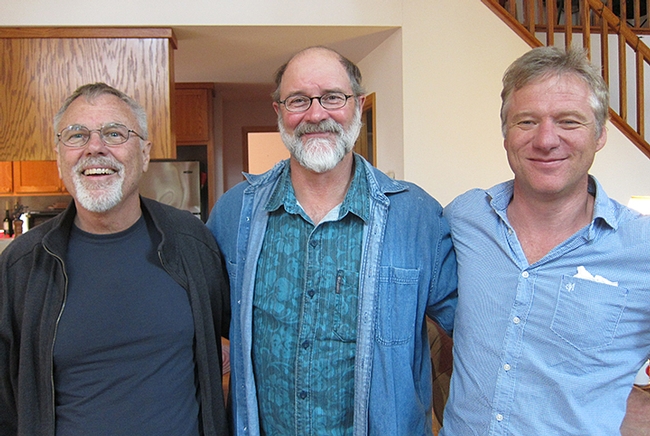
- Author: Kathy Keatley Garvey
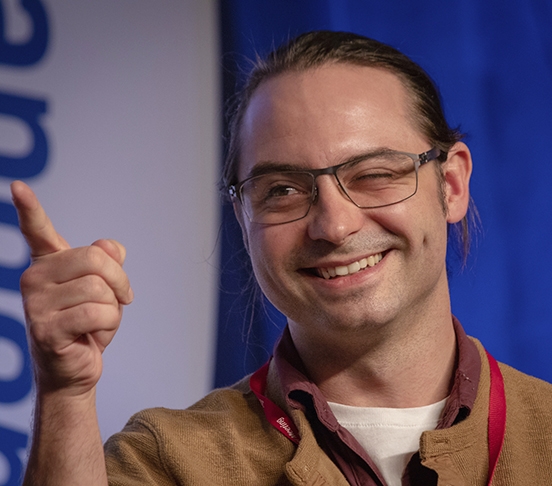
This makes the third year that a UC Davis-based team has won the national championship.
"In the final, UC defeated Texas A&M (graduate students), 140-20," said Joe Rominiecki, manager of communications for the Entomological Society of America (ESA). "UC defeated the University of Florida 110-100 in the semifinal round. In the preliminary round, UC defeated the Texas A&M undergrad team."
The Linnaean Games, launched in 1983, are lively question-and-answer, college bowl-style competitions on entomological facts and played by winners of the ESA branch competitions. The teams score points by correctly answering random questions.
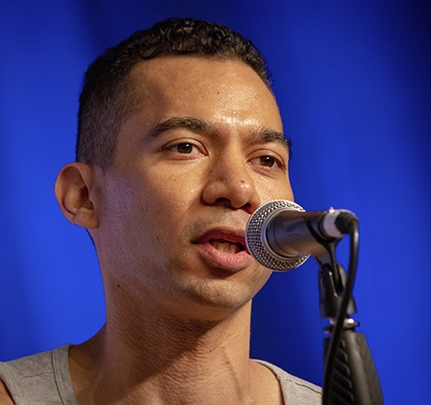
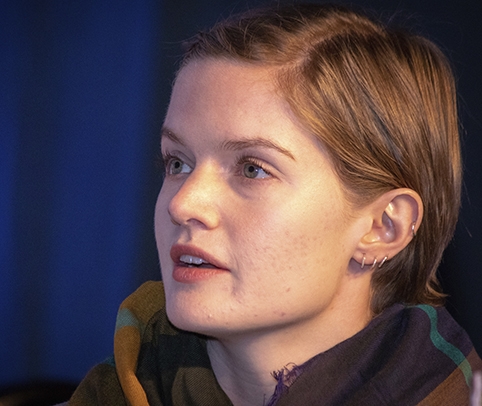
"Before us, there was a sudden death double overtime game (Texas A&M grads vs University of Delaware) which was really exciting," Boudinot said.
Griebenow recalled that among the questions the UC team correctly answered in the championship round:
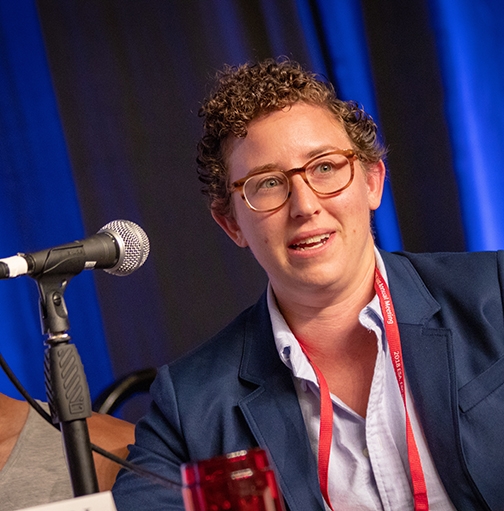
Answer: Arctic tundra
Question: The Passandridae are a family of beetles. What is unusual about their larvae?
Answer: The larvae are ectoparasitoids of wood-boring insects.
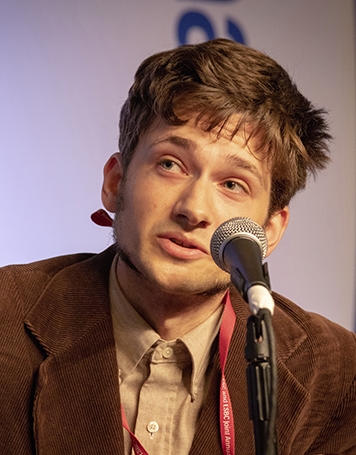
Each ESA branch hosts a Linnaean game competition at its annual meeting. The winning team and the runner-up both advance to the national competition. The national preliminaries took place Sunday, Nov. 11 while the finals got underway at 5 p.m. on Tuesday, Nov. 13.
Members of the winning team will each receive a gold medal and and a plaque for the team's department.
To get to the national finals, the UC team won the regional championship hosted by the Pacific Branch of ESA at its meeting June 10-13 in Reno. They defeated Washington State University in a sudden death overtime to win the title.
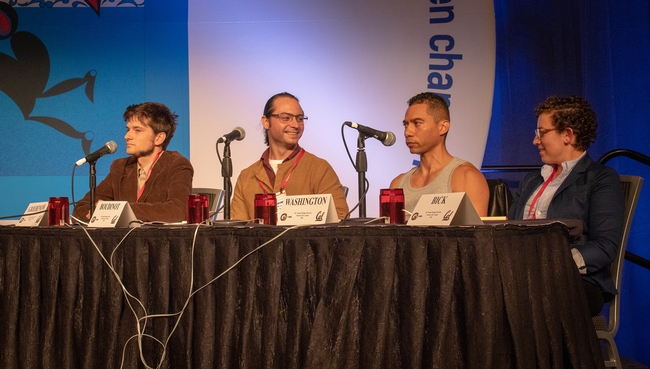
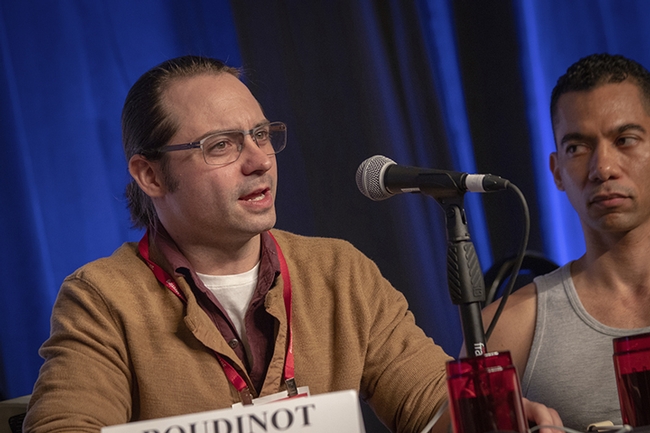
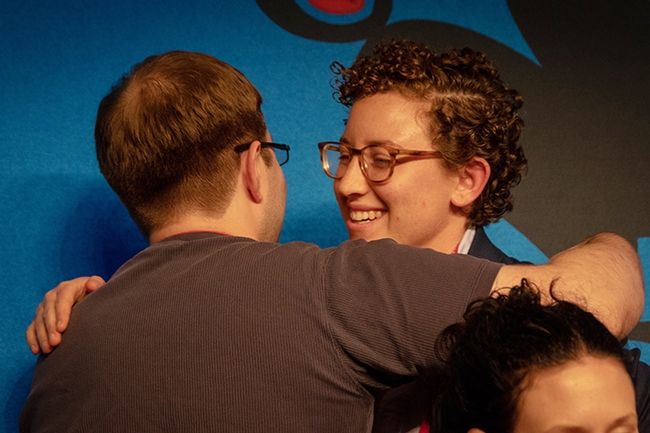
- Author: Kathy Keatley Garvey
"Urban Entomology" will set the theme for the next open house at the Bohart Museum of Entomology, located in Room 1124 of the Academic Surge Building on Crocker Lane, UC Davis campus, The event is set for 1 to 4 p.m., Sunday, Nov. 18. It's free and family friendly.
"The focus is urban entomology," said director Lynn Kimsey, UC Davis professor of entomology. "We'll have out examples of all the wonderful household pests/friends and garden pests, along with the kinds of things they inspect restaurants for."
Scores of displays, and a family arts and crafts activity are planned. The UC Statewide IPM Program (UC IPM) will participate in the open house.
The Bohart Museum, home of nearly eight million insect specimens, is the seventh largest insect collection in North America and houses the California Insect Survey, a storehouse of insect biodiversity.
In addition, the Bohart features a live "petting zoo," comprised of Madagascar hissing cockroaches, walking sticks, tarantulas and praying mantids; and a year-around gift shop, which is stocked with T-shirts, sweatshirts, books, jewelry, posters, insect-collecting equipment and insect-themed candy.
Public weekend hours for the academic year 2018-2019 are:
- Sunday, Nov. 18, from 1 to 4 p.m.: "Bring It Home: Urban Entomology"
- Saturday, Jan. 12, from 1 to 4 p.m.: "Time's Fun When You're Studying Flies"
- Saturday, Feb. 16, times vary: (campuswide) Biodiversity Museum Day
- Saturday, March 9, 1 to 4 p.m., "Eight-Legged Wonders"
- Saturday, April 14, 10 a.m. to 3 p.m., (campuswide) UC Davis Picnic Day
The Bohart Museum's regular hours are from 9 a.m. to noon and 1 to 5 p.m. Mondays through Thursdays. It is closed to the public on Fridays, Saturdays and Sundays and on major holidays. Admission is free. More information on the Bohart Museum is available on the website at http://bohart.
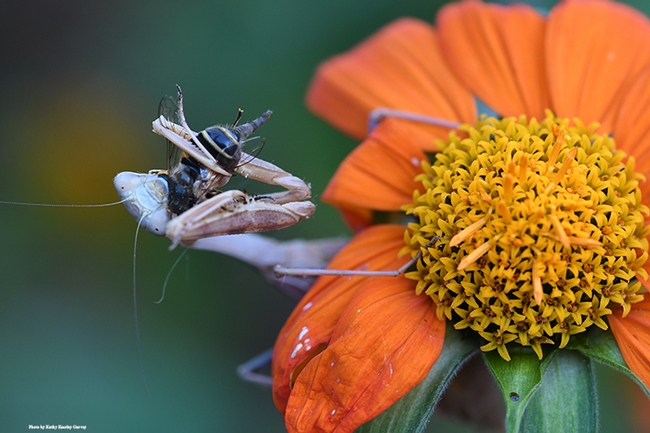
- Author: Kathy Keatley Garvey
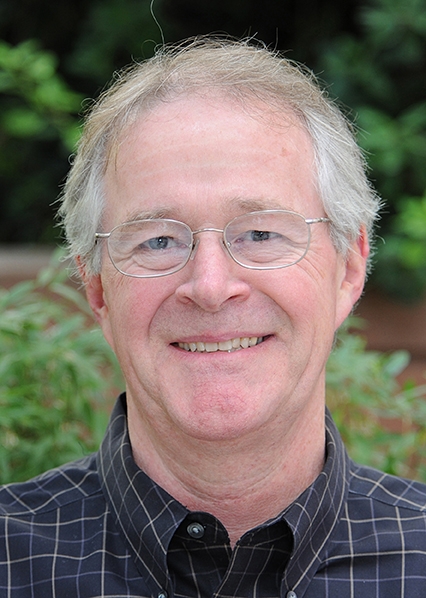
Scott, internationally known for his work on the ecology and epidemiology of dengue, received the award "for his outstanding contributions to the study of mosquito ecology, evolution of mosquito-virus interactions, epidemiology of mosquito-borne disease and evaluation of novel products and strategies for mosquito control and disease prevention."
He focuses his work on contributing to improved public health in the United States and in the developing world, where resources are inadequate and help is desperately needed.
The coveted ASTMH award memorializes parasitologist-entomologist Harry Hoogstraal (1917-1986), a global authority on ticks and tick-borne diseases.
Scott, who joined the UC Davis faculty in 1996, received his bachelor and master's degrees from Bowling Green (Ohio) State University, and his doctorate in ecology in 1981 from Pennsylvania State University. He did postdoctoral research in epidemiology at Yale University School of Medicine's Arbovirus Research Unit, part of the Department of Epidemiology and Public Health.
Scott served on the faculty of the Department of Entomology, University of Maryland, from 1983 to 1996 before joining the UC Davis entomology faculty as a professor of entomology and director of the Vector-Borne Disease Laboratory. He was acting director of the UC Davis Center for Vector-Borne Research from 1996 to 1999, and directed the UC Davis Arbovirus Research Unit from 2001 to 2003. He served as vice chair of the Department of Entomology from 2006 to 2008.
In 2014, Scott was selected a “distinguished professor,” an honorary title bestowed by the provost “to recognize outstanding faculty in the professional series who have achieved the highest level of scholarship.”
Highly honored by his peers, Scott is a fellow of three organizations: American Society of Tropical Medicine and Hygiene (2014), Entomological Society of America (2010), and the American Association for the Advancement of Science (2008). In 2015, he won the Charles W. Woodworth Award, the highest honor awarded by the Pacific Branch of the Entomological Society of America.
Scott is the fifth medical entomologist from UC Davis to receive the Harry Hoogstraal Award since it was first presented in 1987. Other UC Davis recipients:
- 2012: William Reisen, director of the Center for Vectorborne Diseases (CVEC)
- 2007: Bruce Eldridge, former director of the statewide UC Mosquito Research Program and emeritus professor of entomology at UC Davis
- 2005: Robert Washino, emeritus professor and former chair of the UC Davis Department of Entomology
- 2004: John Edman, former director of CVEC and emeritus professor of entomology
